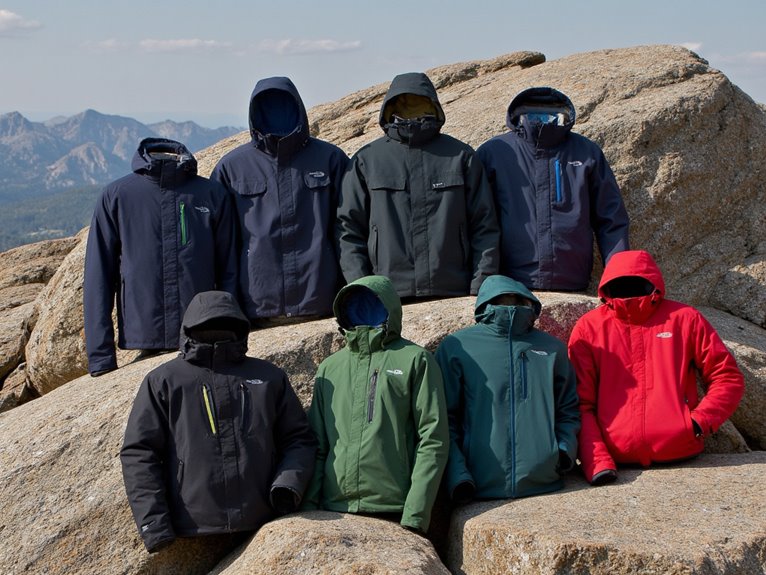Why Is It Not Advisable to Use a Butane Stove Inside a Tent?
Using a butane stove inside a tent poses a significant risk of carbon monoxide poisoning, which can be deadly in enclosed spaces. Incomplete combustion of butane fuel releases carbon monoxide, a colorless, odorless, and tasteless gas that can cause headaches, dizziness, and nausea, even at low concentrations. Additionally, butane stoves emit toxic fumes, deplete oxygen, and can trigger respiratory problems. Ignoring safety precautions can have devastating consequences. Prioritizing safety over convenience when cooking inside a tent is vital. Understanding the risks and consequences of using a butane stove inside a tent is vital for a safe and enjoyable camping experience.
We are supported by our audience. When you purchase through links on our site, we may earn an affiliate commission, at no extra cost for you. Learn more. Last update on 25th December 2025 / Images from Amazon Product Advertising API.
Carbon Monoxide Poisoning Risks
Operating a butane stove inside a tent can lead to a heightened risk of carbon monoxide poisoning, a potentially deadly consequence of incomplete combustion of butane fuel.
When butane fuel is burned, it releases carbon monoxide, a colorless, odorless, and tasteless gas that can be lethal in enclosed spaces.
In a tent, the risk of carbon monoxide poisoning increases as the gas becomes trapped, allowing it to accumulate to dangerous levels.
Even low concentrations of carbon monoxide can cause headaches, dizziness, and nausea, while higher concentrations can lead to coma or even death.
To guarantee a safe and healthy camping experience, take precautions to avoid using butane stoves inside tents and promote a secure environment.
This is crucial to safeguard against the risks of carbon monoxide poisoning.
Oxygen Depletion in Enclosed Spaces
In addition to the risk of carbon monoxide poisoning, using a butane stove inside a tent also poses the threat of oxygen depletion in enclosed spaces, as the combustion process consumes oxygen and reduces the air's oxygen concentration.
This can lead to a hazardous environment, causing dizziness, headaches, and even loss of consciousness.
The confined space of a tent exacerbates the issue, as there is limited ventilation to replenish the oxygen supply.
As the oxygen levels drop, the risk of accidents and injuries increases.
To prioritize safety and avoid using butane stoves inside tents, it is crucial to prevent oxygen depletion and guarantee a safe camping experience.
Safeguarding against oxygen depletion is vital to prevent accidents and injuries.
Butane Stove Emissions Are Toxic
When using a butane stove inside a tent, it's essential to think carefully about the toxic emissions produced by the stove.
These emissions can have serious health implications, including the risk of carbon monoxide poisoning, oxygen displacement, and triggering respiratory problems.
Understanding the potential hazards associated with butane stove emissions is vital for safe and responsible use in enclosed spaces.
Carbon Monoxide Danger
Butane stoves emit toxic fumes that can silently accumulate to deadly levels, posing a significant carbon monoxide poisoning risk to campers and outdoor enthusiasts.
Carbon monoxide (CO) is a colorless, odorless, and tasteless gas that can quickly build up in enclosed spaces, making it difficult to detect.
When inhaled, CO can cause headaches, dizziness, nausea, and even death.
The risk is heightened in tents, where ventilation is often limited, and the confined space allows CO to rapidly accumulate.
To minimize the risk of CO poisoning, use butane stoves in well-ventilated areas.
Always prioritize safety and take necessary precautions to guarantee a safe and enjoyable outdoor experience.
Oxygen Displacement Risk
The combustion byproducts of butane stoves can displace oxygen in enclosed spaces, leading to a potentially hazardous situation.
This occurs when the stove consumes oxygen during combustion, reducing the available oxygen for breathing.
In a tent, this can quickly lead to oxygen depletion, causing headaches, dizziness, and even loss of consciousness.
Moreover, the risk of oxygen displacement is heightened in small, poorly ventilated spaces, making tents an ideal environment for this risk to manifest.
To mitigate this danger, recognize the hazards of oxygen displacement and take necessary precautions to provide a safe and well-ventilated cooking environment when using a butane stove.
Respiratory Problem Triggers
The emissions produced by butane stoves, including carbon monoxide, nitrogen dioxide, and particulate matter, can trigger respiratory problems in individuals with pre-existing conditions, such as asthma or chronic obstructive pulmonary disease (COPD).
These toxic emissions can exacerbate existing respiratory issues, leading to serious health complications.
It is essential to consider the risks associated with using a butane stove inside a tent, particularly for individuals with compromised respiratory systems.
Key Respiratory Risks:
Asthma Attacks: Butane stove emissions can trigger severe asthma attacks, which can be life-threatening if not properly managed.
COPD Exacerbation: Exposure to toxic emissions can worsen COPD symptoms, leading to increased shortness of breath, wheezing, and coughing.
Respiratory Distress: In severe cases, butane stove emissions can cause respiratory distress, which can lead to respiratory failure if not addressed promptly.
Tent Ventilation Is Not Enough
Relying solely on tent ventilation to remove combustion byproducts can be a risky proposition.
While ventilation is essential, it may not be sufficient to eliminate the risks associated with using a butane stove inside a tent.
The combustion process releases carbon monoxide, carbon dioxide, and water vapor, which can quickly accumulate in an enclosed space.
Even with adequate ventilation, these gases can still reach hazardous levels.
In addition, wind direction, tent design, and other environmental factors can impact ventilation effectiveness.
It is vital to recognize that tent ventilation is not a reliable safeguard against the risks of using a butane stove inside a tent.
Deadly Consequences of Ignoring Safety
When using a butane stove inside a tent, ignoring safety precautions can have devastating consequences.
Two critical risks arise when proper safety measures are neglected: carbon monoxide poisoning and tent fabric ignition.
Understanding these hazards is vital to mitigating the potential for serious injury or even fatalities.
Carbon Monoxide Poisoning
Carbon monoxide poisoning poses a significant threat to campers who use butane stoves inside tents without proper ventilation, as the colorless, odorless gas can accumulate quickly and silently, leading to devastating consequences.
The risks are real, and the consequences can be fatal.
95% of carbon monoxide poisoning cases occur in enclosed spaces, making tents a high-risk environment.
Carbon monoxide can reach fatal levels in as little as five minutes, making swift action crucial in case of exposure.
Symptoms can be mistaken for flu or fatigue, making it essential to recognize the warning signs and take immediate action.
Tent Fabric Ignition Risk
Complacency around butane stove safety can have devastating consequences, including the risk of tent fabric ignition, which can erupt into a catastrophic blaze in a matter of seconds.
The proximity of the stove's open flame to the tent's fabric creates a hazardous situation. A slight gust of wind or accidental knock can cause the flame to come into contact with the fabric, igniting it instantly.
The resulting fire can spread rapidly, engulfing the tent and its occupants. In addition, the confined space of the tent can exacerbate the situation, making it difficult to escape or extinguish the flames.
Extreme caution is essential and using butane stoves inside tents should be avoided to prevent such catastrophic events.
Alternative Cooking Options Exist
Portable electric heaters, ceramic cooktops, and microwave ovens provide viable alternatives to butane stoves for indoor cooking. These options eliminate the risks associated with using butane stoves inside a tent.
Three alternative cooking options exist:
Electric Skillets: A convenient and safe way to cook a variety of meals indoors.
Thermal Cookers: Ideal for slow-cooked meals that can be prepared and left unattended.
Indoor Electric Grills: Perfect for cooking a range of protein-rich foods, from burgers to vegetables.
Prioritizing Safety Over Convenience
In the domain of cooking inside a tent, it's essential to weigh the convenience of butane stoves against the potential risks they pose, and prioritize safety above all else.
The allure of quick and easy meal preparation can be tempting, but it's vital to think about the inherent dangers of using an open flame in an enclosed space.
Carbon monoxide poisoning, fires, and burns are all potential consequences of using a butane stove inside a tent.
By acknowledging these risks and opting for alternative cooking methods, outdoor enthusiasts can safeguard a safe and enjoyable camping experience.
Prioritizing safety may require a bit more planning and effort, but it's a small price to pay for peace of mind.


